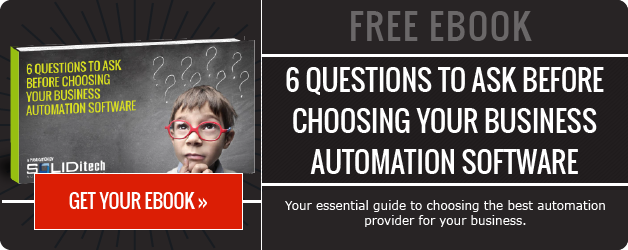Ever feel like off-the-shelf software just doesn't quite fit your business’s needs? You're not alone! Custom Software development can be your secret weapon to boost efficiency, improve productivity, and propel your business forward. Studies by McKinsey reveal that a whopping 71% of customers expect companies to provide a personalised experience. Conversely, a staggering 76% get frustrated when businesses fail to deliver.
This highlights the importance of custom software development in creating a user experience that feels tailored and meets individual needs.
But where do you even begin?
Don't worry, we've got you covered. Here's a handy 7-step guide to walk you through the custom software development process with our step-by-step guide.
1. Dream It Up: Define Your Goals and Objectives

First things first, get clear on what you want to achieve. Do some internal soul searching, reach out to your teams, brainstorm - do what you need to do to try and understand what you want to achieve with your custom software development investment.
Here are some questions we suggest including in your planning sessions:
- Who will be using this software?
- What problems are you trying to solve?
- What opportunities are you trying to seize?
- Imagine your ideal outcome – what will this software help your business do?
Here's a tip: Use the SMART method to set clear goals. Specific, Measurable, Attainable, Relevant, and Time-bound goals will keep you on track.
2. Research: Partnering for Success – Finding the Right Engineering Team

Choosing the right development partner is crucial for turning your software dreams into reality.
Here's a systematic approach to make this important decision:
- Clearly Define Your Needs: Start by revisiting the goals and objectives you outlined in step one. This will help you narrow down potential providers who specialise in the type of software you need.
- Assess Expertise and Experience: Look for providers with a proven track record in custom software development, ideally with projects similar to yours. Check their portfolios, case studies, and client testimonials.
- Technical Proficiency: Ensure the provider has expertise in the technologies relevant to your project. This might include programming languages, frameworks, or cloud platforms.
- Communication and Collaboration: Open communication is key. Choose a provider who is responsive, transparent, and willing to collaborate closely with your team throughout the project.
- Post-Deployment Support: Enquire about the provider's support and maintenance services after the software is launched. This ensures your investment continues to deliver value over time.
- Mutual Understanding: Clearly communicate your definition of project success and ensure the provider aligns with your expectations. Discuss timelines, budget, and any potential risks upfront.
By following these steps, you'll be well on your way to finding a development partner who not only has the technical skills but also understands your business goals and can contribute to your overall success.
3. Planning Makes Perfect: The Discovery Phase

Now that you know your destination, it’s time to plan the journey.
The discovery phase is all about working closely with your chosen provider to refine your requirements, identify any potential roadblocks, and define the project's scope. Your provider will spend this time working with you to understand your business, what your challenges are and what the things are that uniquely define you.
Consideration should be placed on your budget and timelines, and how existing technology can be utilised in meeting your goals. Think of this as creating a detailed roadmap for your custom software development project.
Not sure what your development company is talking about during meetings? Make sure you’re both speaking the same code, and maximising the opportunities offered through feedback loops.
4. Building Your Dream: The Development Stage

This is where the magic happens! Skilled software engineers will translate your scoped requirements into code, bringing your solution to life.
Most software teams will make use of an Agile approach to developing your solution. This makes use of the ‘Scrum’ framework where the work structure is broken down into a two-week cycle, known as a ‘Sprint’. Why 2 weeks you may ask? Because it strikes a balance between productivity and flexibility - giving teams manageable workloads whilst also allowing for frequent feedback loops.
During this phase, the focus will be on building the core functionalities that make your software tick. Ensuring smooth integration and rigorous testing to eliminate any bugs is essential. Think of this as meticulously crafting your software, piece by piece.
5. Testing, Testing, 1, 2, 3

Before you set your software loose on the world, it is best to put it through its paces.
This is where your software team will make use of Quality Assurance Testing (QAT) and User Acceptance Testing (UAT). Their inclusion is designed to ensure a few specific operational goals:
- That you end up with a good quality piece of software that works as expected (This is QAT)
- That the end result is usable, that the provided/developed design specification was actually correct, and that the correct operational assumptions were made (This is UAT)
Both QAT and UAT are essential components for the delivery of a successful software project. They provide progressive and context-specific testing to ensure that you end up with a good quality piece of software that works as needed.
6. Liftoff! A Smooth Transition to Your New Software

Launching your custom software isn't just about flipping a switch – it's about ensuring a seamless transition for your team and your business. Here's what a successful launch looks like:
- Phased Rollout: A phased rollout can be more effective than a "big bang" launch. This allows you to test the software with a smaller group of your users, gather feedback, and work with your engineering team to make adjustments as you go. Be careful here though as the number of allowed changes can depend on the contact that you have with your provider.
- Training: Comprehensive training and support materials help users get up to speed quickly. This could include training sessions, documentation and dedicated support channels (again, contract dependant).
- Continuous Feedback Loop: Encourage your users to provide feedback throughout the launch process. This helps you identify and address any issues early on and ensures that the software meets their needs.
- Iterative Improvements: Software is never truly "finished." Embrace a mindset of continuous improvement.
- Change Management: Communicate clearly with your team about the new software and how it will impact their workflows - your engineering team will probably have some tips and tricks for you to ensure a smooth transition.
Remember, a successful launch is just the beginning. By prioritising user feedback and making iterative improvements, your custom software will continue to evolve and deliver value long after its initial deployment.
7. The Journey Continues: Ongoing Support & Maintenance

Your custom software is up and running, and your business is soaring! But just like any high-performance machine, it needs regular maintenance to keep it running smoothly. Ongoing maintenance keeps your software up-to-date, addresses any emerging needs, and optimises performance for continued success.
Custom software solutions are not “set and forget” implementations, but they are rather dynamic tools that will evolve alongside your business.
Building a strong, ongoing relationship with your software provider is essential. What this will ensure, is that you have a reliable partner who will help you navigate any issues, answer questions and help adapt the software to your changing requirements. Typically this is done through ongoing contracts with your provider, this will facilitate continuous improvements and expansions of your solution. Making sure it grows with your business and that it remains aligned with your goals.
Investing in ongoing support and maintenance fosters a long-term partnership that keeps your software a robust and valuable asset to your business.
Conclusion
Your custom software journey may differ slightly from the above depending on your requirements, the team you select to support you etc - but it will roughly follow these phases.
Investing in custom software might seem daunting initially, but it’s important to remember that this is an ongoing investment with benefits that include, but are not limited to:
- Reduced costs: Reduce errors, and streamline operations for long-term savings
- Improved efficiency: Automate tasks, optimise workflows, and eliminate bottlenecks for increased productivity
- Quicker time-to-market: Streamlined development cycles and targeted features accelerate product launched
- Improved customer experience: Tailored solutions address specific user needs, leading to higher satisfaction and loyalty








Comment